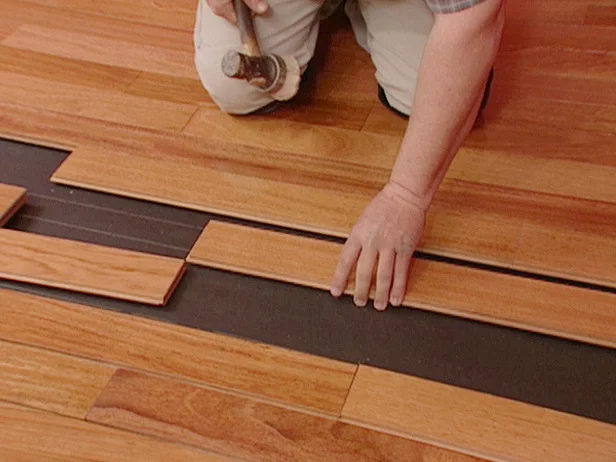Introduction
When installing hardwood flooring, the type of subfloor plays a crucial role in determining the best installation method. Hardwood can be installed over plywood, concrete, or radiant heat systems, each requiring specific techniques for stability and durability. Below are the most common installation methods categorized by subfloor type.
Hardwood Installation on Plywood Sub-floors
Plywood is the most traditional and versatile subfloor for hardwood flooring. It allows for various installation methods, including nailing, stapling, gluing, or floating the flooring over an underlayment.
- Nail Down Installation: Solid hardwood is nailed directly into the plywood using a flooring nailer. Best for thicker hardwood planks.
- Staple Down Installation: Uses staples instead of nails for securing the hardwood. Provides a firm hold while allowing some flexibility.
- Glue Down Installation: Engineered hardwood is glued directly to the plywood using an adhesive. Recommended for added stability and soundproofing.
- Floating Installation: Click-lock or tongue-and-groove engineered hardwood is installed without glue or nails, allowing it to 'float' over an underlayment.
Hardwood Installation on Concrete Sub-floors
Concrete subfloors require different installation techniques to accommodate moisture control and stability. Engineered hardwood is typically preferred for this type of subfloor.
- Glue Down Installation: Engineered hardwood is glued directly to the concrete using a moisture-resistant adhesive.
- Floating Installation: Engineered hardwood with a locking system is installed over a vapor barrier and underlayment. Ideal for moisture-prone areas.
- Plywood Over Concrete + Nail Down: A plywood subfloor is first installed over the concrete, allowing traditional nail-down hardwood installation.
Hardwood Installation on Radiant Heat Sub-floors
Radiant heating systems require special considerations for hardwood installation due to temperature fluctuations that can cause expansion and contraction.
- Floating Installation: Engineered hardwood is recommended for radiant heating, as it allows for expansion and contraction.
- Glue Down Installation: Some engineered hardwoods can be glued with a flexible adhesive that accommodates heat expansion.
Final Thoughts
Choosing the right hardwood installation method based on your subfloor type ensures stability and longevity. Plywood offers the most flexibility, while concrete requires moisture-resistant solutions. Radiant heat flooring demands special attention to prevent warping. Selecting the right approach will enhance the durability and aesthetics of your hardwood floors.
